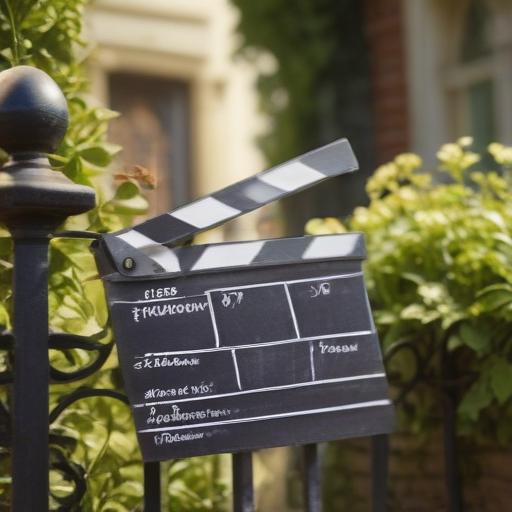Bridgerton’s season three botanical garden was a major behind-the-scenes achievement, with production designer Alison Gartshore revealing the kneading of timing, technique, and artistry that created the show’s opulent floral moment.
Gartshore explained that the team was racing against the clock, having only three days left to complete the set before the two lead characters — Penelope Featherington and Colin Bridgerton — danced in front of the opened floral pop-up garden. Coordination with the special effects crew was crucial, as there were moments when the exterior box had to be opened at a precise time, leaving the rest of the team to work on the surrounding details in tandem and then jump back in when the box closed.
To keep the look authentic without distracting the actors, the designers sourced florals inspired by the 18th and 19th centuries, painting 12 distinct pieces and tiling them with variation. The project timeline stretched over roughly 10–12 weeks from start to finish, a demanding schedule that included a shift in concept: the ball room was initially slated to be the butterfly ball, but showrunner Jess Brownell asked for a moment of spectacle to accompany the queen’s arrival.
Because long shoots in hot studio conditions would degrade real florals, the team leaned on faux greenery. The centerpiece evolved into a pop-up floral installation built from painted paper petals that could unfold to reveal a garden inside, with the mechanics engineered by the special effects team so the leaves opened in synchrony. Impressively, there was no CGI involved; all of it was practical effects, a testament to the crew’s ingenuity and persistence.
The season three arc centers on the romance between Benedict Bridgerton and Sophie Baek, with the next chapter slated to explore their story in 2026. This emphasis on intricate design and tactile spectacle underscores Bridgerton’s continued commitment to immersive, period-accurate storytelling.
Key takeaways:
– A three-day window dictated the final push to finish the garden set.
– The floral look drew on 18th–19th century influences, with 12 painted pieces and varied tiling.
– The centerpiece is a week-long build of painted paper petals that unfold into a full garden, driven by practical effects.
– No CGI was used for the garden sequence; everything is mechanical and practical.
– The queen’s arrival inspired a shift in the ball concept, adding extra spectacle.
– Season three focuses on Penelope and Colin; season four (2026) will explore Benedict and Sophie Baek.
What this shows: Bridgerton continues to push for spectacular, real-world mechanics in its production design, delivering lavish visuals that complement the performances while maintaining strict timelines and on-set practicality.
Summary: The Bridgerton team pulled off a complex, practical, pop-up floral centerpiece built over weeks to create a standout moment in season three, reflecting a deep commitment to period-accurate detail and on-site craftsmanship. The franchise looks ahead to Benedict and Sophie Baek’s story in 2026, signaling ongoing expansion of its ensemble-driven romance.
